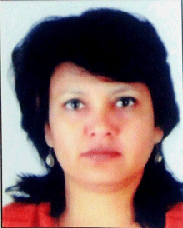 Bengaluru:
Bengaluru: Buried in the flood of congratulatory messages that the Indian Space Research Organisation (ISRO) received after its recent space feat is one discordant note raising some concern.
It is from none other than G. Madhavan Nair, the former chairman of the country's premier space body. Nair, during whose term the agency launched the Chandrayaan mission to the Moon, feels ISRO's latest Polar Satellite Launch Vehicle (PSLV) mission potentially has some hidden dangers to its own space assets.
On February 15, a PSLV released a flock of over 100 nano- and micro-satellites of overseas customers for a fee. Of them, 88 satellites called "Doves" belonged to Planet, a San Francisco-based startup. All these tiny satellites, each smaller than a briefcase, were lobbed into a polar orbit 506 km above the Earth by the PSLV in a flawless mission.
"I am somewhat concerned because the region where so many of these objects have been placed is the same where our own Earth observation satellites are, or will be," Nair told this correspondent over the phone.
The nano-satellites, Nair pointed out, have a short useful life after which they become junk that will keep floating in space for years in the same orbit with chances of colliding with ISRO's operational satellites sharing the same space.
"The debris that these nano-satellites will leave after their brief existence in space are potential source of damage to us. Safety of our satellites is more important," Nair maintained.
He cautioned that ISRO should carefully weigh a few million dollars of commercial gain from launching foreign nano-satellites into 500-km orbits against the potential harm to the present and future Earth observation satellites close to their lanes.
He also noted that in case of a future collision between the debris from any of these nano-satellites and a working satellite belonging to another country, India will have to pay for the damages. "Therefore, I do not know if we should do it," he said.
Nair was referring to the Space Liability Convention that entered into force in 1972, under which launching countries "should bear international responsibility" for all space objects launched from their territory "regardless of to whom the space object belongs".
Nair said that in his view, short-lived nano-satellites, if launched, should be put in much lower orbits -- below the operational region of remote sensing satellites. Any junk formed in such low-earth orbits will descend to Earth due to atmospheric drag and pose no problem to the working satellites.
"Also, this issue should be raised in the United Nations Committee on the Peaceful Uses of Outer Space in order to arrive at a designated corridor for small and nano-satellites."
ISRO is a member of Inter-Agency Space Debris Coordination Committee (IADC) which coordinates global efforts to reduce man-made and natural space debris by sharing research and identifying debris mitigation options.
While ISRO spokesman Deviprasad Karnik said his agency has "no comments" to offer to the concerns raised by the agency's former chairman, Planet spokesperson Rachel Holm dismissed any danger to ISRO's operating satellites as feared by Nair.
"At Planet, we designed our concept of operations with debris mitigation in mind," the company said in an email. "Our Doves fly at a self-cleaning orbit. After 3-5 years, gravity pulls our satellites down into Earth's atmosphere where they burn up completely."
Nair's concerns have, however, been echoed by space debris experts in different forums.
At a recent International Astronautical Congress in Toronto, Hugh Lewis, a leading space debris expert from the University of Southampton, said that since 2005, CubeSats have been involved in more than 360,000 close encounters, "many of these in Sun-synchronous orbits that are popular with remote sensing and Earth science satellites".
Lewis had warned that if CubeSats continue to be launched into long-lived orbits without any means of disposing them of, "they will contribute to the growing space debris hazard".
In 2014, the International Space Station had to move three times to avoid lethal chunks of space debris and, only a month ago, European Space Agency had reported that its Swarm-B satellite had a miraculous escape from space debris that came as close as 361 metres.
Experts predict that satellites -- just like drones -- are increasingly coming within reach of ordinary people. As the cost of getting them in orbit plummets, the risks of collisions in space "will grow," says a recent report from the US National Academy of Sciences.
 Bengaluru: Buried in the flood of congratulatory messages that the Indian Space Research Organisation (ISRO) received after its recent space feat is one discordant note raising some concern.
Bengaluru: Buried in the flood of congratulatory messages that the Indian Space Research Organisation (ISRO) received after its recent space feat is one discordant note raising some concern.